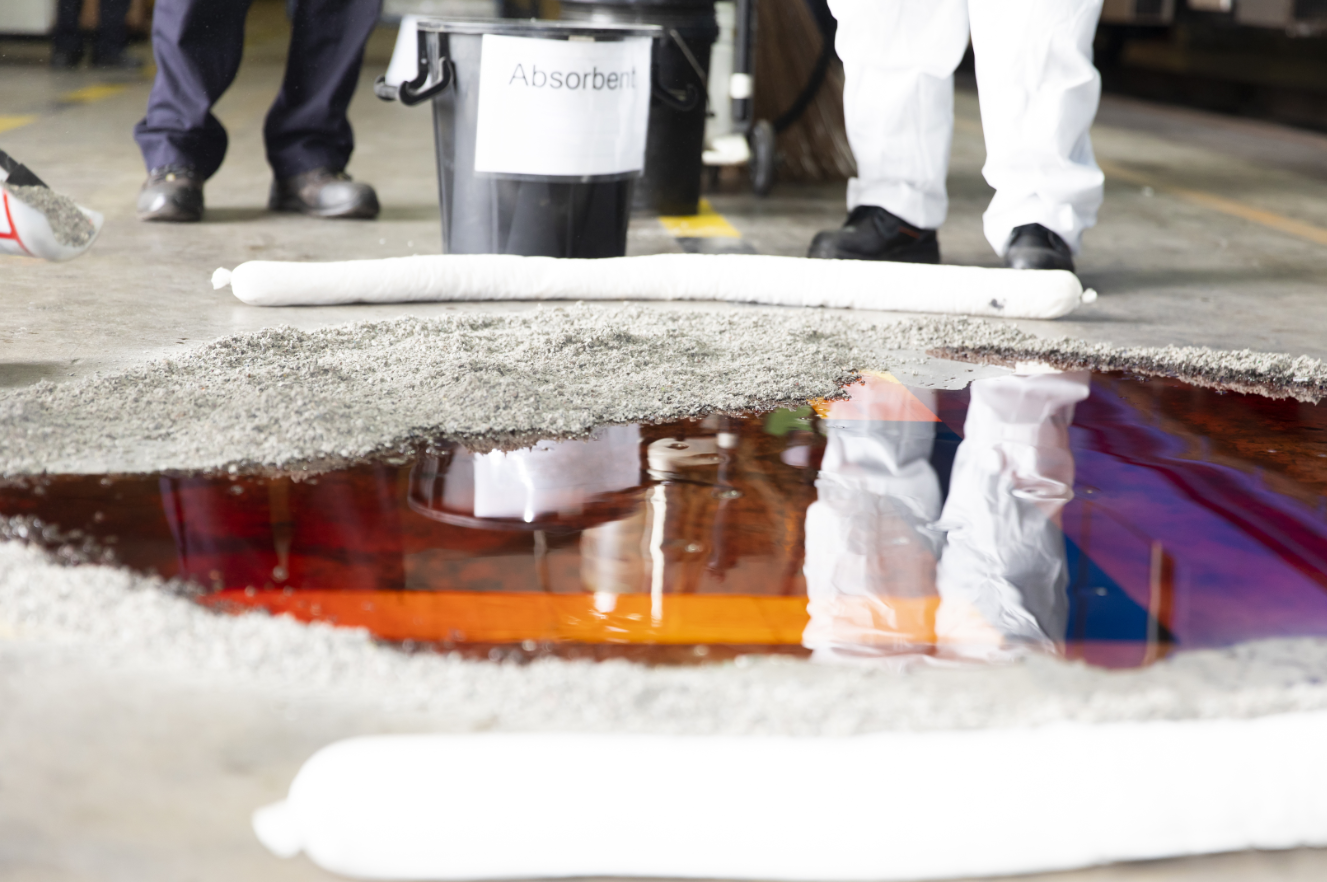How to Contain a Chemical Spill
All safety hazards are serious, but few compare to the risks posed by a chemical spill. Chemical spills happen more often than one would think and can be dangerous and result in disastrous outcomes. However, when properly contained and managed, the implications of a chemical spill can greatly be reduced.
Please note: Chemical spills should only be contained by personnel that are familiar with their company’s emergency response plan and have the tools necessary to clean the spill. For all other instances, and notably high-hazard or large volume spills, containment and cleanup should be left to the professionals.
To ensure your company operates as safely as possible and reacts appropriately in the event of a chemical spill, follow the tips below.
Prevention
The best way to handle a chemical spill is preventing one from occurring in the first place. Some best practices to implement include:
- Practice proper storage. To prevent a chemical spill, one must be knowledgeable in correctly housing various materials on site. For example, the material must be compatible with its container, temperature ranges may need to be considered, and certain media must be segregated from others. By following correct storage procedures, the risk of a chemical spill can be minimized. For more information on proper storage of specific materials, refer to section 7 of the corresponding product’s Safety Data Sheet.
- Conduct routine inspections. Routinely inspect and document the condition of the containers at your facility, keeping an eye out for leaks, cracks, or bulges in a container; corrosion or wearing of seals; and any other characteristic that could indicate vulnerability.
- Handle chemicals with care. When chemicals are appropriately handled, the chance for an accident is lessened. Be sure to use the right equipment to move containers (e.g. drums or totes), and when the material must be used, only take the amount needed for a designated task.
- Dispose of materials when necessary. When a chemical or material is no longer needed, it should be disposed of to diminish the chance of a future chemical spill.
Managing a Chemical Spill
When a chemical spill occurs, the next best thing is to be prepared. Generally, when managing a chemical spill there are four steps that must be taken, referred to as the 4Cs.
1. Communicate
The first “C,” or step to manage a chemical spill, is notifying all personnel within the spill area. Depending on the spill's severity, the area or building may need to be evacuated. Immediately after notifying personnel, report the spill to your emergency coordinator as well as to first responders, if necessary.
2. Control
Next, control the spill and prevent it from spreading or contaminating additional areas or media. This should only be complete while donning the appropriate personal protective equipment. For example, a valve can be tightened, a nozzle can be closed, or patch can be applied to a container. In other instances when hazardous materials are involved, salvage packaging may be necessary. This process involves placing the leaking container(s) into a
salvage drum or cylinder which is specifically made for the recovery or disposal of damaged, defective, or leaking packages.
3. Contain
Once a chemical spill has been controlled, the next step is for it to be contained. Depending on the nature of the spill, absorbent pads may be applied, chemical booms may be dropped, or a drying agent may be administered. Notably, special attention should be paid to ditches or drains that may allow the material to travel to additional locations outside of the immediate area. In the event that the spill area cannot be accessed at that time, be sure to mark it off so others do not come in contact with it.
4. Clean
The final step for managing a chemical spill is cleaning up the material. This includes collecting the materials impacted and safely disposing of them. Disposal should be based upon local laws and federal regulation in your area. Additionally, certain materials spilled may need to be reported to the Environmental Protection Agency if the spill exceeds the Reportable Quantity of that material listed in Table 1 of
Appendix A to §172.101- List of Hazardous Substances and Reportable Quantities.
Outside of the 4Cs, additional best practices to prevent and contain a chemical spill include conducting a root cause analysis of the incident and updating your company’s
emergency action plan and routine procedures.
Spill Containment & Emergency Response
For more information on spill containment and
emergency response, reach out to EnviroServe at (800) 488-0910.

